SLUSD88A March 2019 – June 2019 BQ25886
PRODUCTION DATA.
- 1 Features
- 2 Applications
- 3 Description
- 4 Revision History
- 5 Device Comparison Table
- 6 Pin Configuration and Functions
- 7 Specifications
-
8 Detailed Description
- 8.1 Overview
- 8.2 Functional Block Diagram
- 8.3
Feature Description
- 8.3.1 Device Power-On-Reset
- 8.3.2 Device Power Up from Battery without Input Source
- 8.3.3 Device Power Up from Input Source
- 8.3.4 Input Current Optimizer (ICO)
- 8.3.5 Buck Mode Operation from Battery (OTG)
- 8.3.6 PowerPath Management
- 8.3.7 Battery Charging Management
- 8.3.8 Status Outputs
- 8.3.9 Input Current Limit on ILIM Pin
- 8.3.10 Voltage and Current Monitoring
- 8.3.11 Thermal Regulation and Thermal Shutdown
- 8.3.12 Battery Protection
- 8.4 Device Functional Modes
- 9 Application and Implementation
- 10Power Supply Recommendations
- 11Layout
- 12Device and Documentation Support
- 13Mechanical, Packaging, and Orderable Information
Package Options
Mechanical Data (Package|Pins)
- RGE|24
Thermal pad, mechanical data (Package|Pins)
- RGE|24
Orderable Information
9.2.3 Application Curves
CVBUS = 1 µF, CPMID= 10 µF, CBAT = 10 µF, CSYS = 44 µF, L = DFE252012F-1R0 (1 µH) (unless otherwise specified)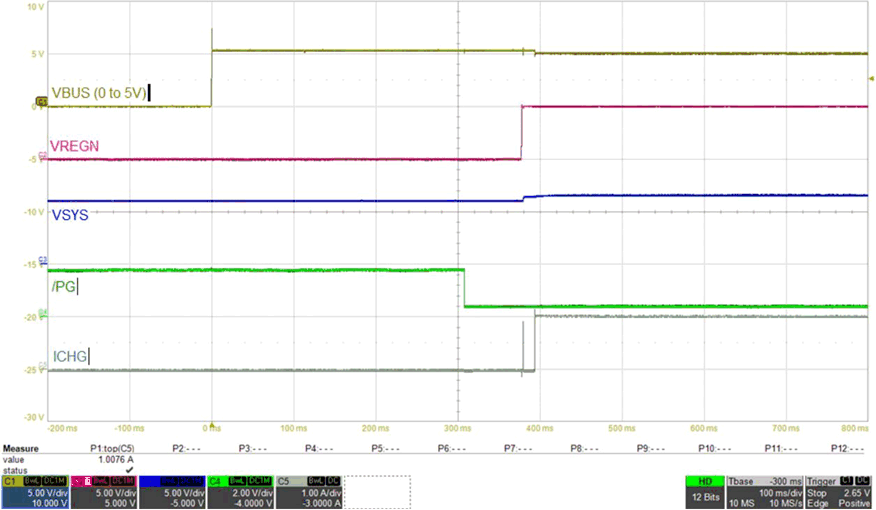
| VBUS = 5 V | VBAT = 6.0 V | ICHG = 1 A |
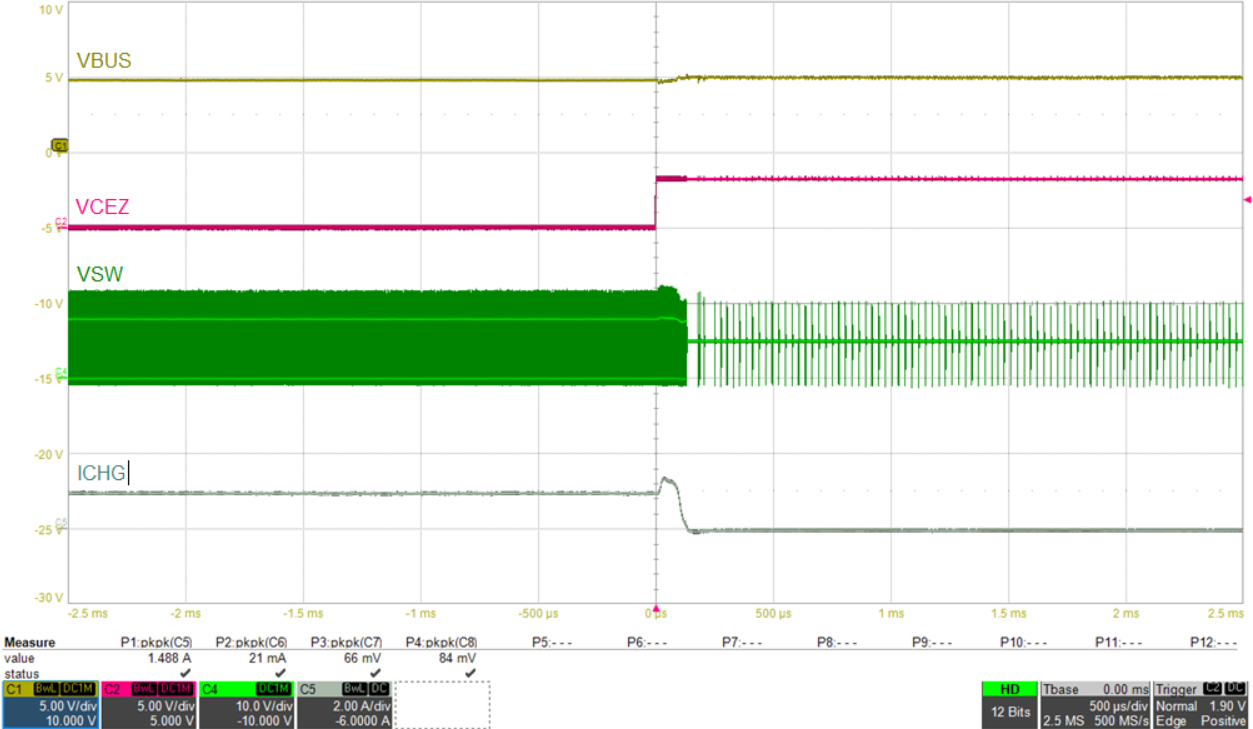
| VBUS = 5 V | VBAT = 7.4 V | ICHG = 1 A |
-Startup.png)
| VBAT = 7.6 V | VBUS = 5.1 V | No IBUS load |
-PWM-Switching.gif)
| VBAT = 7.6 V | VBUS = 5.1 V | IBUS = 1 A |
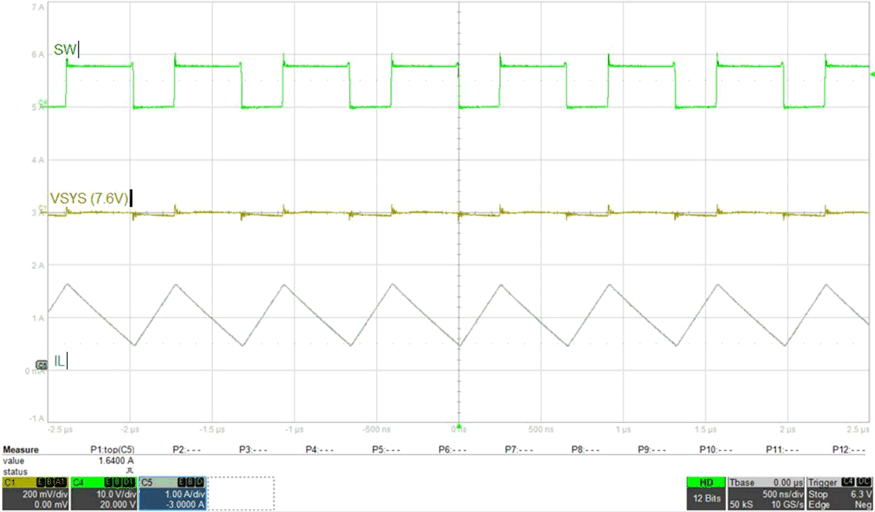
| VBUS = 5 V | VBAT = 7.6 V | ICHG = 1 A |
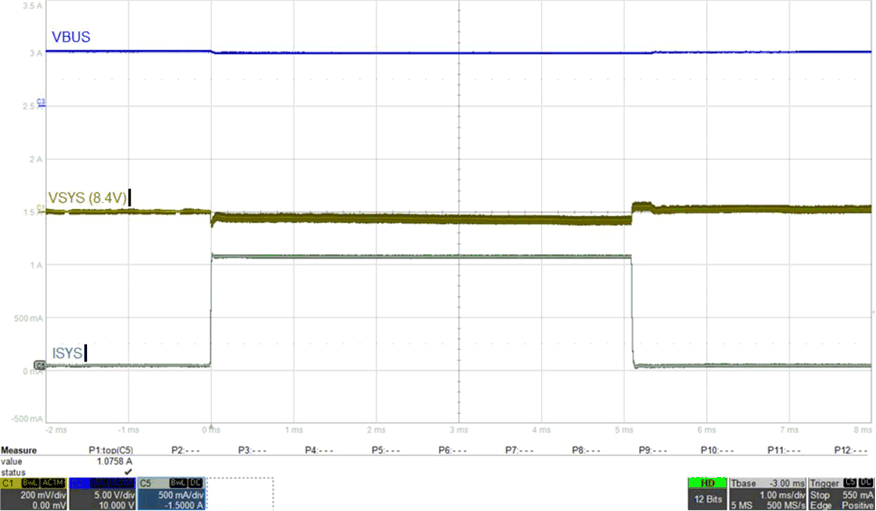
| VBUS = 5 V | VBAT = 8.4 V | Charge disabled |
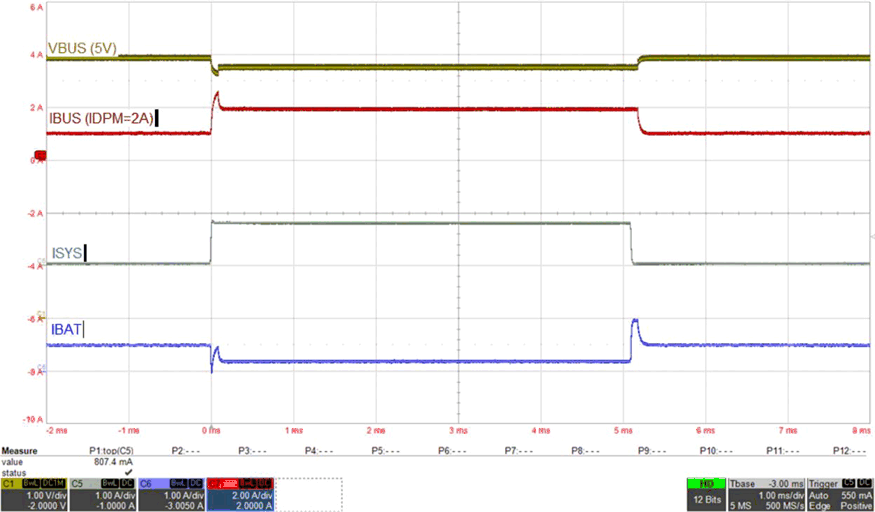
| DCP Adapter | VBAT = 8.0 V | Charge enabled |
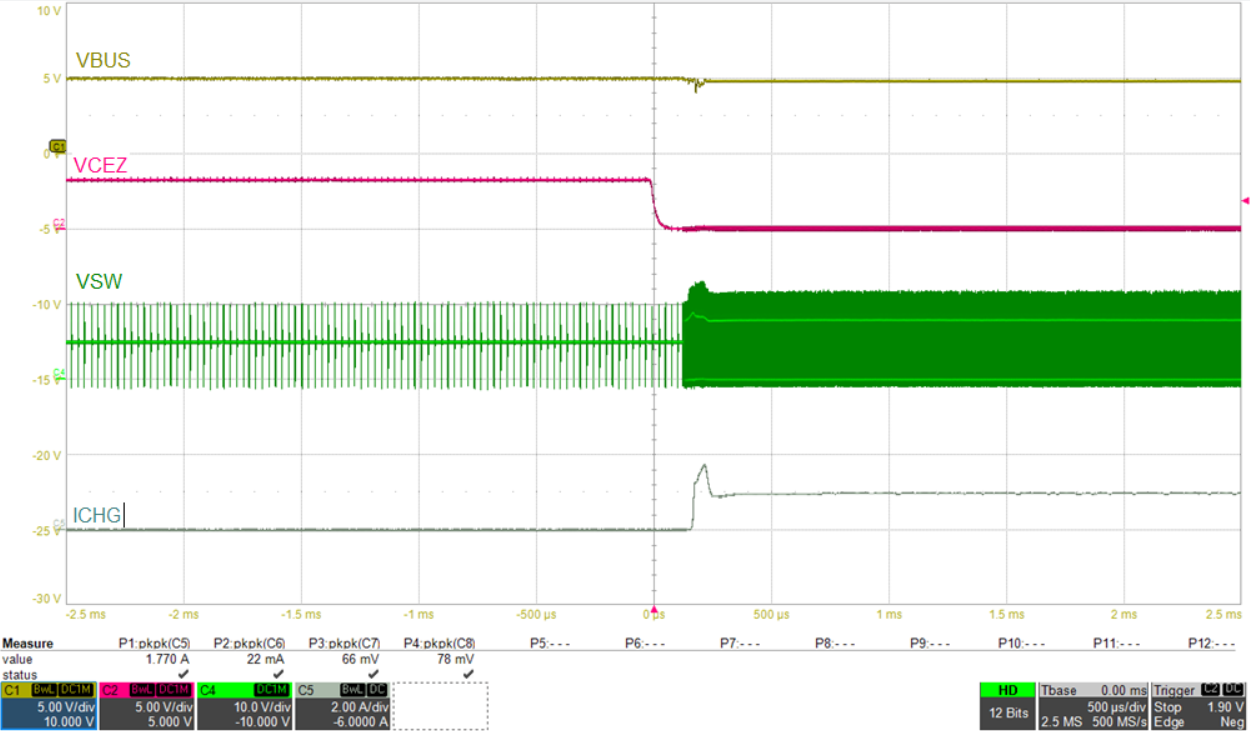
| VBUS = 5 V | VBAT = 7.4 V | ICHG = 1 A |
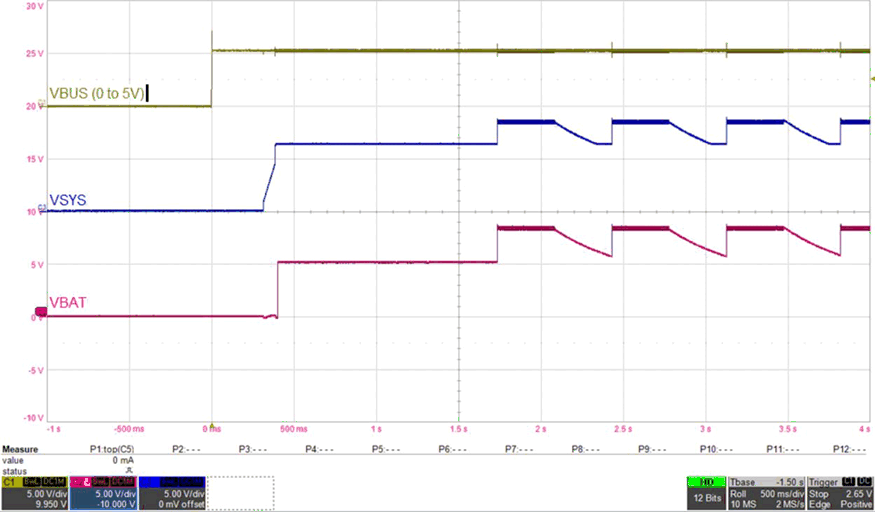
| VBUS = 5 V | VBAT = Open | Charge enabled |
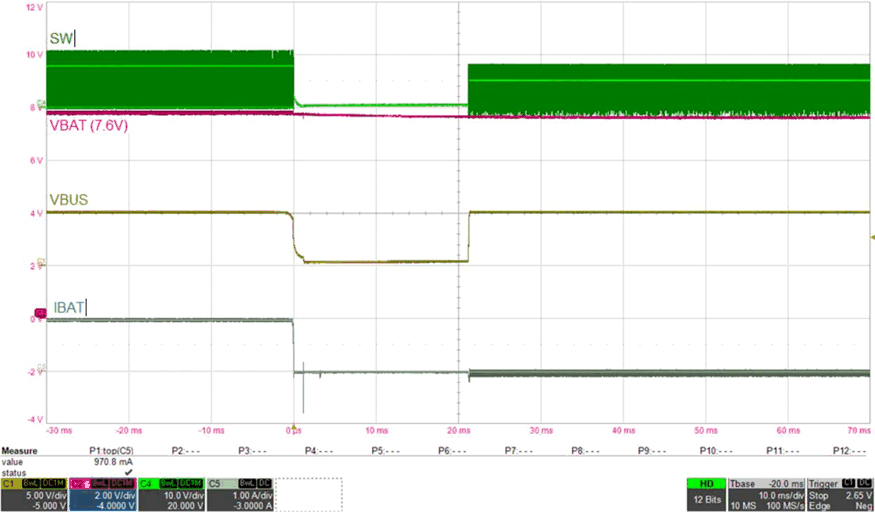
| VBAT = 7.6 V | Adapter removed with OTG = HIGH | RBUS = 25 Ω |
-PFM-Switching.gif)
| VBAT = 7.6 V | VBUS = 5.1 V | IBUS = 0 mA |
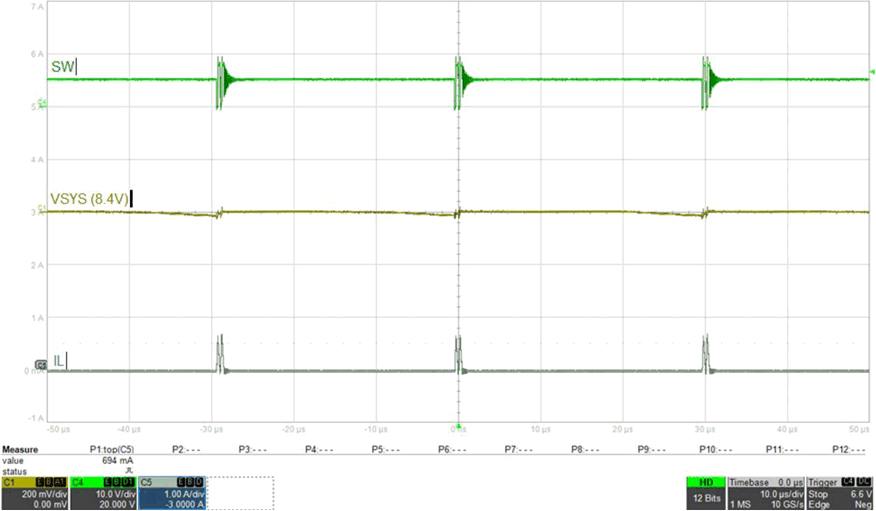
| VBUS = 5 V | VBAT = 8.4 V | Charge disabled |
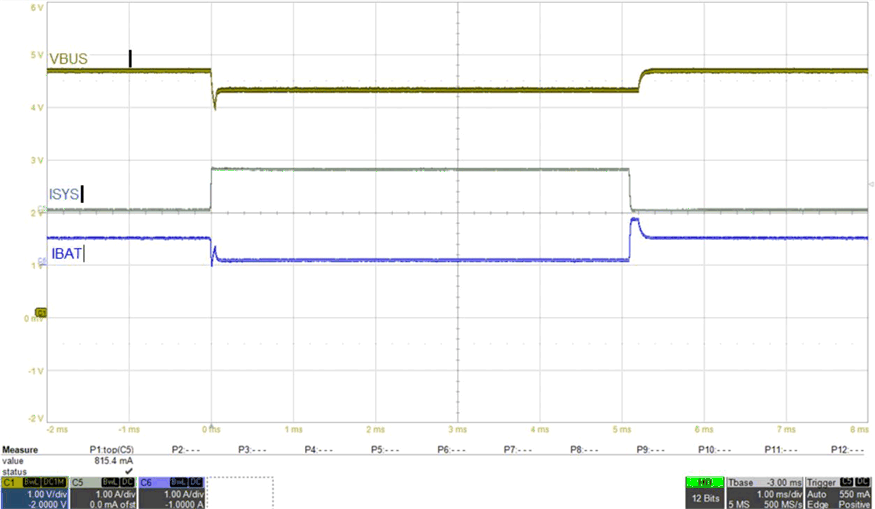
| DCP Adapter | VBAT = 8.0 V | Charge enabled |
-Load-Transient-Resposne.gif)
| VBAT = 7.6 V | VBUS = 5.1 V |